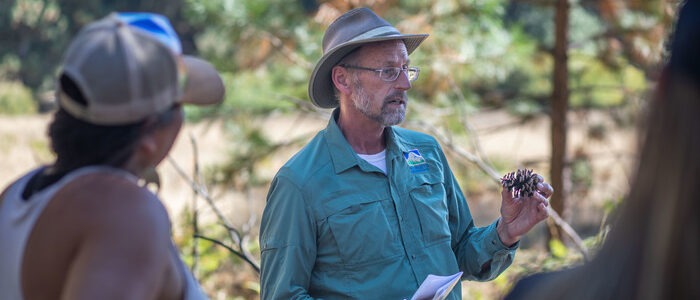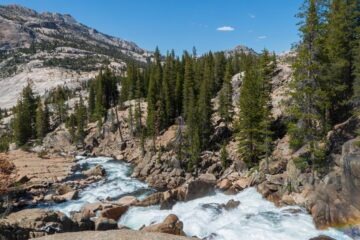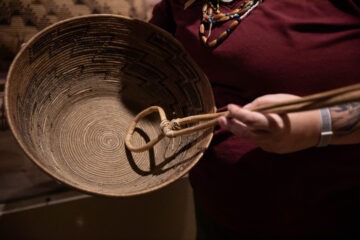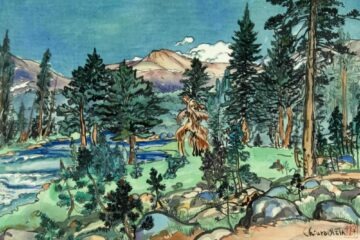by Cory Goehring, Senior Naturalist
As the Senior Naturalist for Yosemite Conservancy, I’ve spent almost two decades exploring this park and attempting to get to know every inch of it. Today, I’d like to share with you some unique ways to spend a day in Yosemite National Park.
1. Exploring Yosemite Until You See a Black Bear
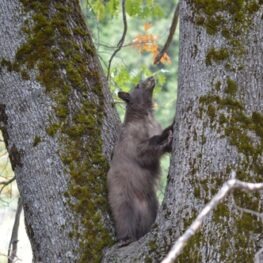 Yosemite is home to approximately 300 to 500 black bears (Ursus americanus). However, did you know that 90% of our black bears have brown or cinnamon-colored fur? Yes, they’re the same black bears found in the eastern United States and throughout North America. The twist here is that our black bears moved out to California, started bleaching their hair blonde, and took up surfing. (No. Just kidding.)
Yosemite is home to approximately 300 to 500 black bears (Ursus americanus). However, did you know that 90% of our black bears have brown or cinnamon-colored fur? Yes, they’re the same black bears found in the eastern United States and throughout North America. The twist here is that our black bears moved out to California, started bleaching their hair blonde, and took up surfing. (No. Just kidding.)
Black bears in California primarily have brown or cinnamon-colored fur due to the foliage in our forests. This foliage allows more sunlight to penetrate the forest floor, which naturally lightens the bears’ fur to brown or cinnamon. This offers another significant advantage: it allows the bears to better camouflage with the pine needles and duff on the forest floor.
One unique way to spend a day in Yosemite is to explore its nooks and crannies and hike the trails until you are lucky enough to see one of Yosemite’s truly black bears. This endeavor might require several visits or even years of exploration. If you do come across a truly black-coated bear, consider yourself to have had a unique experience here in Yosemite National Park.
Also, remember to keep wildlife wild by storing your food properly and maintaining a proper distance from wildlife. This is crucial not only to protect yourself, but also to safeguard the bears as well. Responsible behavior ensures that we can all enjoy the beauty and presence of these magnificent creatures without harming their natural behaviors and habitat.
2. Visit a Sky Pilot 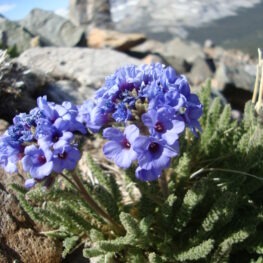
Venture up to Tuolumne Meadows and hike Mount Dana in July and August to explore some of the unique flora of the Sierra. Tuolumne Meadows is one of my favorite areas to spend a day in Yosemite during the summer. You can avoid the summer crowds and heat, as it offers cool, crisp mornings in July and August. Additionally, a unique thing about Tuolumne Meadows, and specifically the higher elevations of Yosemite, is its ecosystems and environments. Here, you have plants and animals that only live at these high elevations, facing very short growing seasons and intense UV light.
Spend a day in Yosemite hiking the strenuous trail up Mount Dana to witness some of the most brilliant flora in Yosemite National Park. Sky pilots (Polemonium eximium) are unique species that only grow at high elevations and bloom for a very brief time. It’s one of my favorite hikes, although I have to admit, I have to prepare myself by hiking throughout the summer to gain the stamina needed to conquer Dana, as it does go up to 13,000 feet. Luckily, along the way there are plenty of stops to experience breathtaking views of Yosemite’s High Sierra and encounter some of the unique flora that the park has to offer.
This journey not only tests your physical limits but also rewards you with unparalleled natural beauty, allowing you to immerse yourself in the tranquility and magnificence of Yosemite’s less-traveled paths.
3. A Conifer Exploration
Yosemite National Park is unique in that it encompasses five different life zones, each hosting distinct types of cone-bearing trees. Embark on an exploration, armed with a field guide or — to add an extra layer of discovery — download the iNaturalist app. Use it to take pictures of the cones you find and upload them to a worldwide data base to help with citizen science.
Challenge yourself to identify five different conifers within Yosemite National Park. This quest will guide you through the park’s varying life zones and terrains, enriching your understanding of Yosemite and its ecosystems. Along the way, you’ll uncover fascinating aspects of the park, such as flowers that bloom at specific elevations and animals that rely on these cones for food. It’s a wonderfully unique approach to experiencing the natural beauty and diversity of Yosemite National Park.
4. Spend a Day in Yosemite with an Expert
In Yosemite, we have a saying: “The more you know, the more you see.” The more you get to know Yosemite, the more the park reveals itself. One of the best ways to get to know Yosemite is to explore it with some of the park experts. If you have just a couple of hours to explore the park consider going on a two-hour open-air tram tour with a National Park Service interpreter. It’s a fantastic way to explore Yosemite Valley and learn from a park expert.
Yosemite Conservancy offers some amazing outdoor programming. From two-hour sunset walks, morning birding walks, and wildlife walks Yosemite Conservancy offers some of the best programs in Yosemite. One of our most popular programs is the astronomy program. We like to say, “Half the park is after dark,” and nothing compares to viewing the Milky Way from Yosemite. The universe has a way of speaking to you when you’re viewing it with a silhouette of Yosemite Falls and Half Dome, staring up at the cosmic wilderness.
These unique experiences showcase the diverse beauty and history of Yosemite National Park, making each visit memorable.
Photo credits:
Starry night in Yosemite by Matt McIvor
Yosemite black bear by Caitlin Lee-Roney
Sky pilots courtesy of NPS
Dan Webster leading a naturalist program by Brittany Colt

